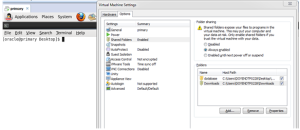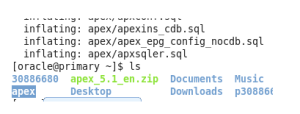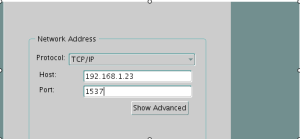APEX INSTALLATION(5.1) in ORACLE12c
In this blog we are going install the apex 5.1. Here, i have a database with 12c. So here i explained about this install steps at database directly.
If we have a database then, follow below steps.
Step 1: Download apex 5.1 from using the below link,
https://www.oracle.com/tools/downloads/apex-v50-downloads.html
Step 2:Save it in our local machine and share it in our VM,
VM->Settings->Shared Folders->Add(browse and select the location of the apex software)

Step 3: Unzip the files(after unzip we get apex folder)

Step 4:We need to startup the database,
[oracle@primary apex]$ export ORACLE_SID=primary
[oracle@primary apex]$ sqlplus / as sysdba
SQL> startup
SQL*Plus: Release 12.2.0.1.0 Production on Mon Sep 28 20:29:59 2020
Copyright (c) 1982, 2016, Oracle. All rights reserved.
Connected to an idle instance.
Step 5: Create a tablepspace apex :
SQL> create tablespace apex datafile ‘/u01/app/apex01.dbf’ size 1g;
Tablespace created.
Step 6:check the version of the apex:
SQL> SELECT comp_name, version, status FROM dba_registry WHERE comp_id=’APEX’;
no rows selected
Step 7: Command to install apex
@apexins.sql APEX APEX TEMP /i/

Verify version apex command:
SYS> select * from apex_release;
VERSION_NO
——————————————————————————–
API_COMPATIBILITY
——————————————————————————–
PATCH_APPLIED
——————————————————————————–
5.1.0.00.45
2016.08.24
Step 8: Set the password:
@apxchpwd.sql file.(password – Apex#123)
===================================================================
This script can be used to change the password of an Application Express
instance administrator. If the user does not yet exist, a user record will be
created.
================================================================================
Enter the administrator’s username [ADMIN]
User “ADMIN” does not yet exist and will be created.
Enter ADMIN’s email [ADMIN]
Enter ADMIN’s password []
Created instance administrator ADMIN.
SQL>
Step 9: It is used to load the images.
@apex_epg_config.sql /home/oracle/

Step `10: Unlock the users:
SQL> col USERNAME for a30
set pages 1000 lines 1000
select username,created,account_status,default_tablespace,temporary_tablespace from dba_users where username like ‘%APEX%’;
SQL> SQL>
USERNAME CREATED ACCOUNT_STATUS DEFAULT_TABLESPACE TEMPORARY_TABLESPACE
—————————— ——— ——————————– —————————— ——————————
APEX_PUBLIC_USER 28-SEP-20 EXPIRED & LOCKED USERS TEMP
APEX_050100 28-SEP-20 EXPIRED & LOCKED APEX TEMP
APEX_INSTANCE_ADMIN_USER 28-SEP-20 EXPIRED USERS TEMP
SQL> alter user APEX_INSTANCE_ADMIN_USER identified by Apex#123 account unlock;
SQL> alter user APEX_PUBLIC_USER identified by Apex#123 account unlock;
alter user APEX_050100 identified by Apex#123 account unlock;SQL>
SQL> ALTER USER anonymous ACCOUNT UNLOCK;
ALTER USER xdb ACCOUNT UNLOCK;
ALTER USER apex_public_user ACCOUNT UNLOCK;
ALTER USER flows_files ACCOUNT UNLOCK;
Step 12: TO CHECK PARAMETER VALUE BY USING
SQL> show parameter shared
NAME TYPE VALUE
———————————— ———– ——————————
hi_shared_memory_address integer 0
max_shared_servers integer
shared_memory_address integer 0
shared_pool_reserved_size big integer 20132659
shared_pool_size big integer 0
shared_server_sessions integer
shared_servers integer 1
We need to change the Shared_servers as Value 5
SQL> show parameter shared_servers
NAME TYPE VALUE
———————————— ———– ——————————
max_shared_servers integer
shared_servers integer 1
SQL>
To change a parameter value of shared serveres by using following command:
SQL> ALTER system SET shared_servers=5 scope=both;
Used to perform the final configuration steps for Oracle Application Express, including setting the XDB HTTP listener port and Application Express ADMIN password.
Running script: @apxconf.sql
Setup password for ADMIN
Configuring XDB Http Listener port
Step 13: Set the gethttpport to 8080.
SQL>SELECT DBMS_XDB.gethttpport FROM DUAL;SQL>
GETHTTPPORT
———–
0
SQL> EXEC DBMS_XDB.sethttpport(8080);
SQL> SELECT DBMS_XDB.gethttpport FROM DUAL;

After installation of Apex then we want to create the listener and tns :
LISTENER:

SERVICE NAME:

TO SET A LOCAL LISTNER IN SQL:

